
Inspiring Germany
Idyllic Country Life: 10 outstanding villages
Germany's villages are idyllic retreats in nature, even more so when their residents engage with their own ideas. We'll take you on a journey to 10 villages that received awards in the competition 'Our Village Has a Future'.
Basedow – Prussian Manor Estate with a Village
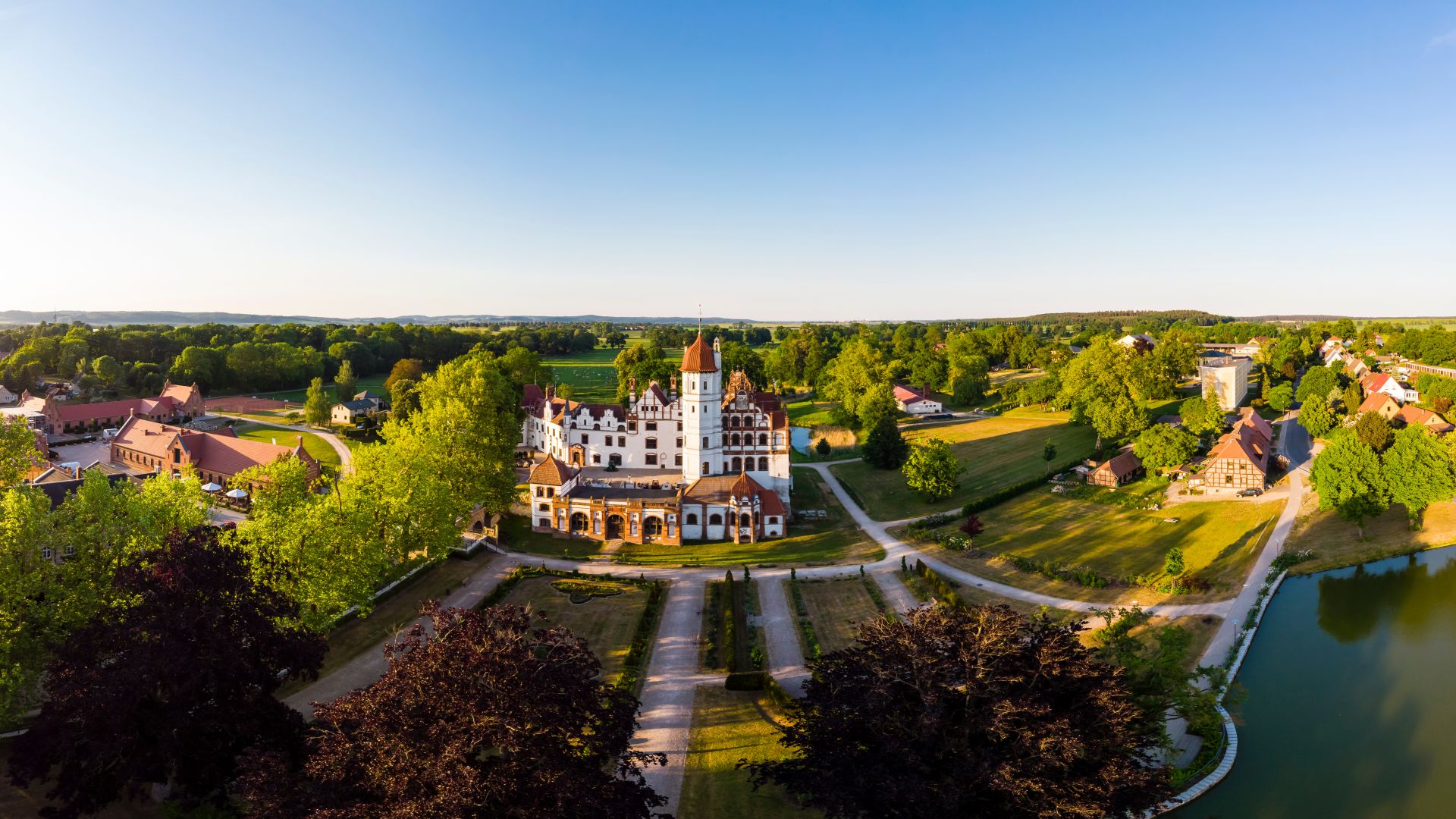 Basedow: Basedow Castle Park on the Mecklenburg Lake District
©Adobe Stock (Martin Moxter/Westend61)
Basedow: Basedow Castle Park on the Mecklenburg Lake District
©Adobe Stock (Martin Moxter/Westend61)
Prussian Duo: Two star architects designed a 'decorated manor estate' in the landscape park of Basedow in the Mecklenburg Lake District in the 19th century. They integrated not only the ornate Schloss Basedow, but the entire village as well. Wandering through avenues and groves of trees planted centuries ago, you’ll enjoy ever-new perspectives on the castle, stables and village church.
Sipplingen - fruit blossoms on Lake Constance
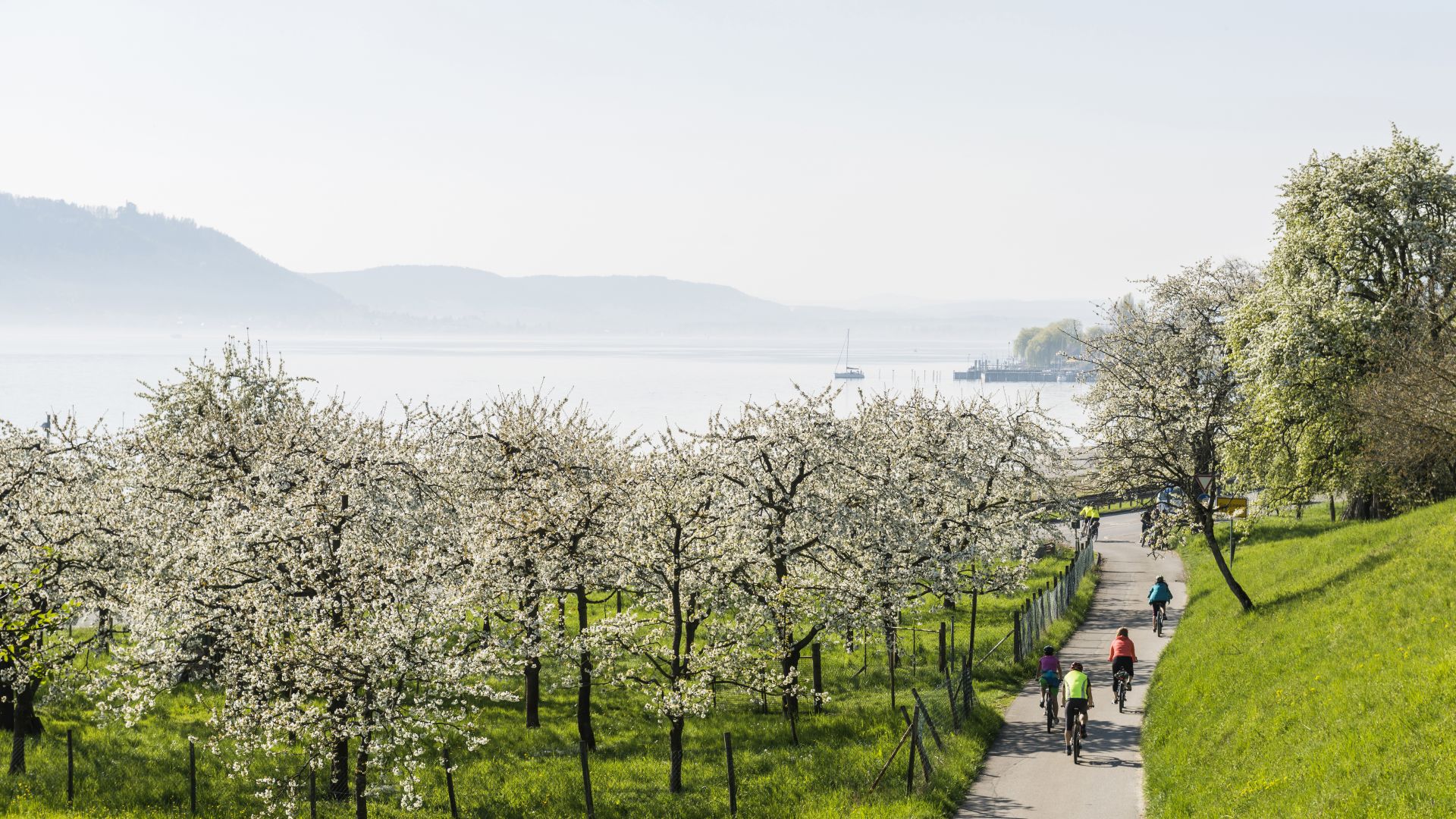 Sipplingen: Cycling through through flowering orchards at Lake Constance
©Lookphotos (Daniel Schoenen)
Sipplingen: Cycling through through flowering orchards at Lake Constance
©Lookphotos (Daniel Schoenen)
The season of fruit blossoms kicks off at the beginning of April, starting with the plum and cherry trees, followed by apples and pears: the village of Sipplingen, nestled idyllically on the shores of Lake Constance, lies in the heart of the fruit-growing area. During hikes - for example along the “SeeGang” Premium hiking trail - visitors can enjoy the splendour of the blossoming scenery, and also relish the sweeping views over the largest lake in Germany and its steep cliffs Afterwards, activities on the water such as swimming, paddling, sailing or surfing beckon for refreshing adventures.
Amerang - country life in Upper Bavaria
No less than three museums make Amerang in Chiemgau a special attraction not only for fans of culture, but also for car enthusiasts: around 200 classic cars are on display in the area’s own transport museum, starting with the first motorised carriage to classics from the 70s and 80s. The Farmhouse Museum provides a deep insight into rural life in Upper Bavaria, with its historic farms, barns and workshops. The Chiemsee Palace, with its fruit, and educational garden, provides an enjoyable contrast.
Wiesenburg - a touch of the exotic in Brandenburg
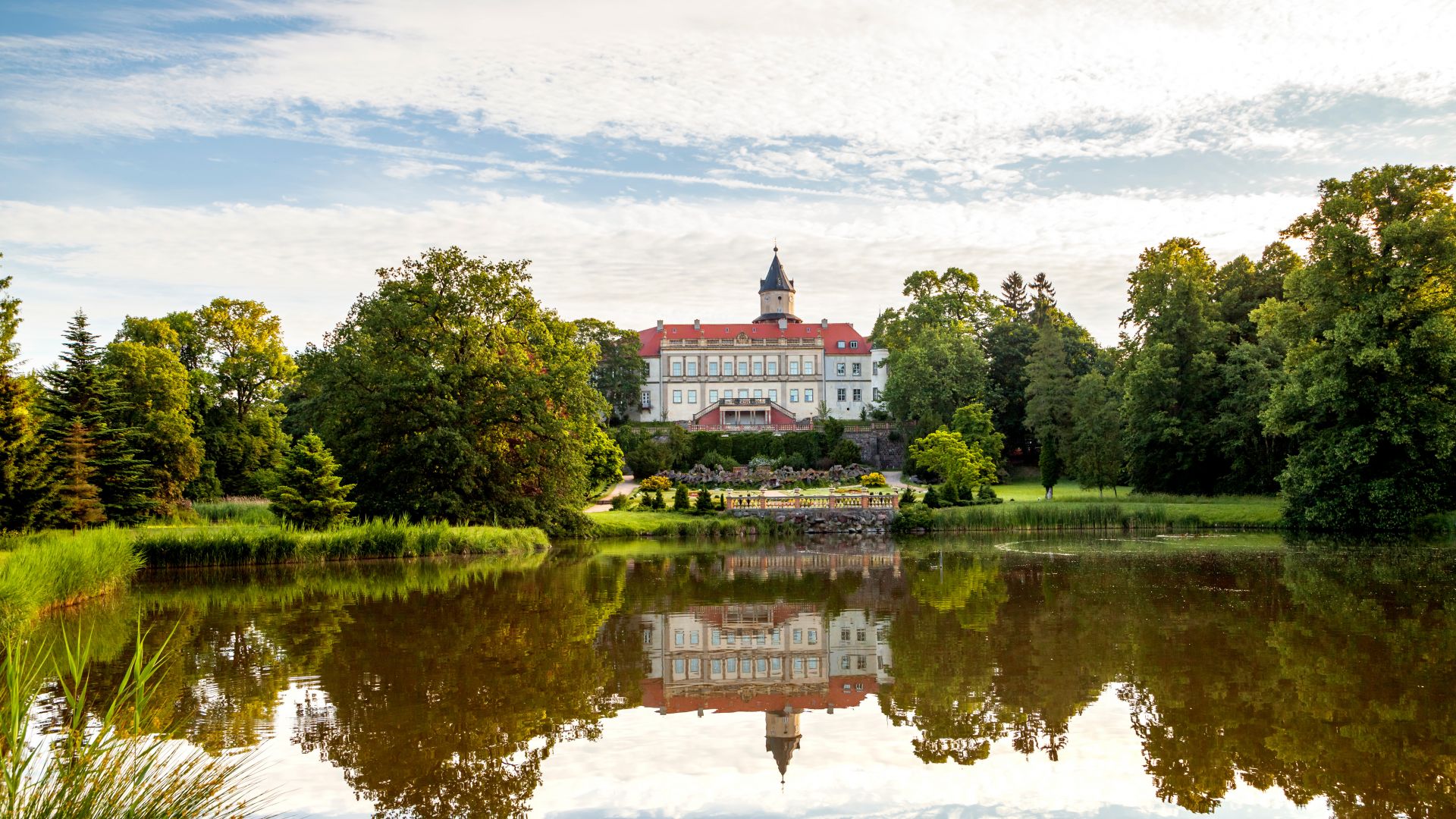 Wiesenburg/Mark: castle with reflection in lake
©Adobe Stock (Sina Ettner)
Wiesenburg/Mark: castle with reflection in lake
©Adobe Stock (Sina Ettner)
The explosion of colours begins in May, when the metre-high rhododendrons in the enchanting Wiesenburg Palace Garden’s Hoher Fläming Nature Park transform into purple and crimson sculptures. During a stroll through the overgrown ensemble, visitors can also discover exotic trees like the moss cypress and giant arborvitae. Wiesenburg and its neighbouring villages are best explored via the International Art Trail with almost 30 art installations presented within nature - some of which can even be experienced virtually.
Assinghausen - the Rose Village of Upper Sauerland
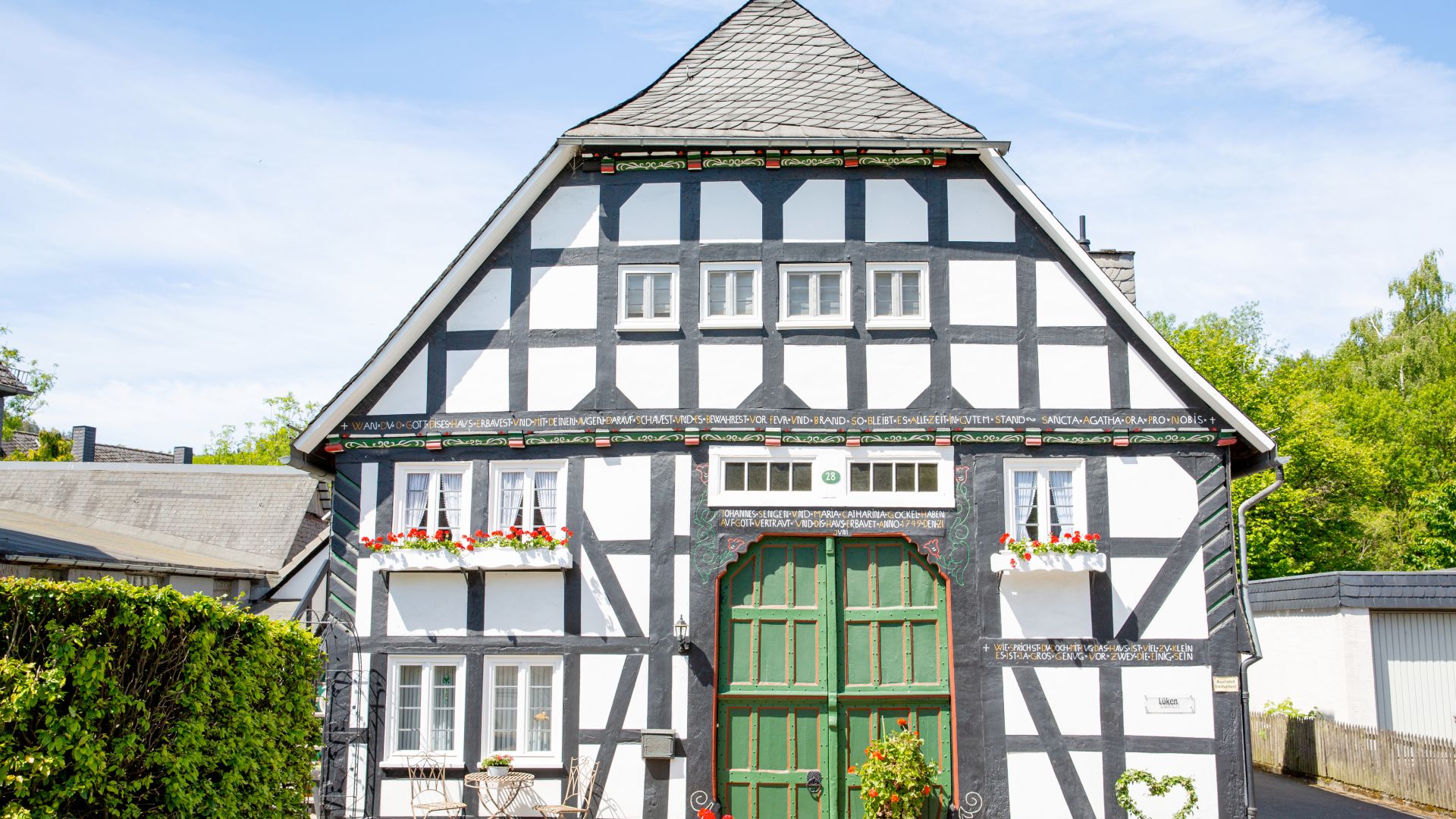 Oslberg: half-timbered house in the district of Assinghausen in the Sauerland region of Germany
©Adobe Stock (traveller70)
Oslberg: half-timbered house in the district of Assinghausen in the Sauerland region of Germany
©Adobe Stock (traveller70)
Golden Angel, Flame Dancer or Heath Fire: these are just three of the approximately 150 varieties of roses that you can experience in their full bloom and enchanting fragrance in Assinghausen, North Rhine-Westphalia, between May and September. Everywhere in the gardens and along the façades of the official rose village, the flowers provide a contrast to the distinctive black slate roofs and black and white façades of the Upper Sauerland. It's best to follow one of the four designated rose trails through the alleys.
Monreal - half-timbered splendour in the Eifel region
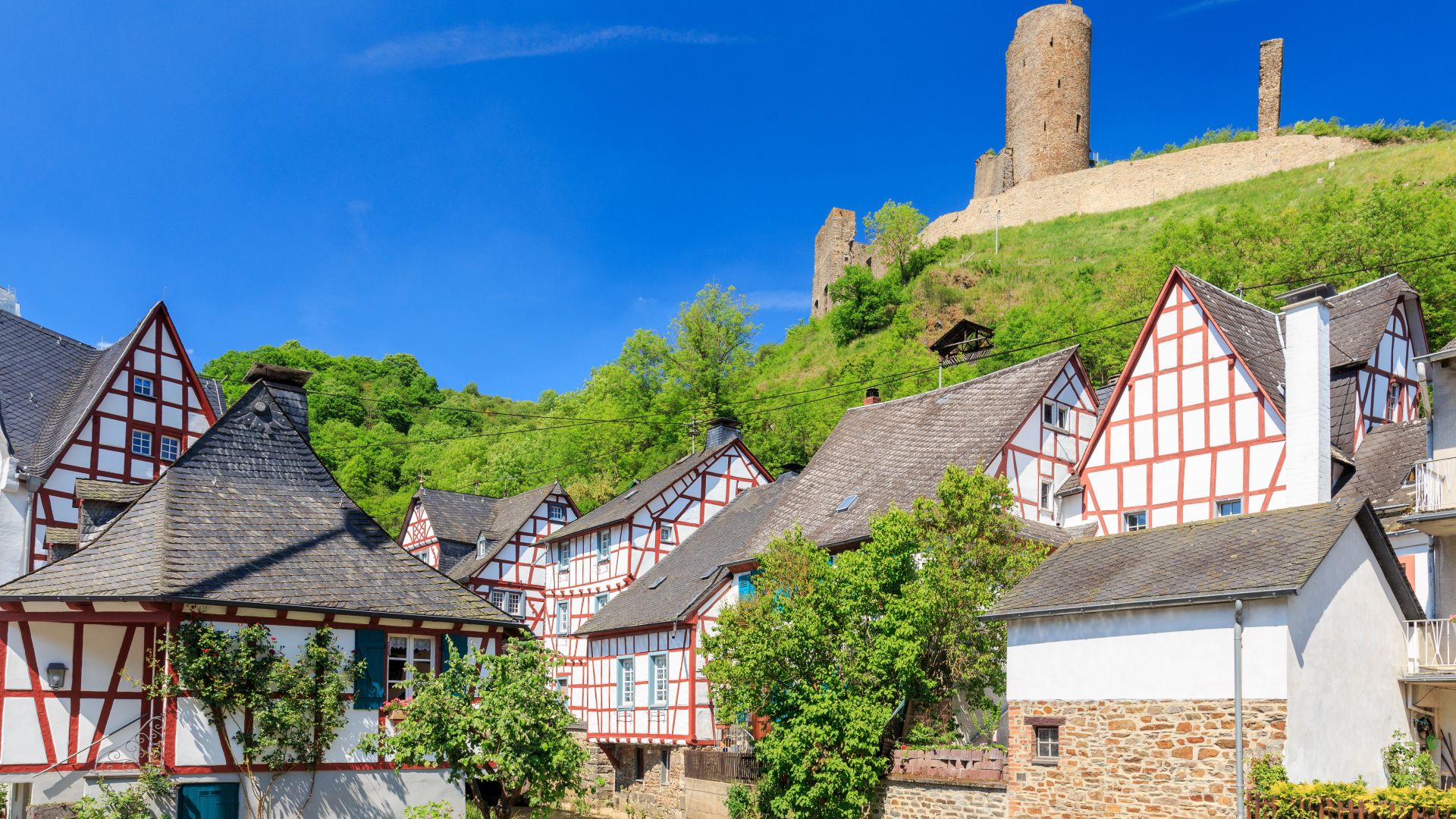 Monreal: Half-timbered houses with Löwenburg castle ruins
©AdobeStock (mmuenzl)
Monreal: Half-timbered houses with Löwenburg castle ruins
©AdobeStock (mmuenzl)
When you walk along the cobblestone streets of the village of Monreal in the low mountain range of the Eifel, you are accompanied by the murmur of the Elzbach stream rushing through the centre of the village. It is hard to believe that this quiet place was a bustling centre of cloth production from the 17th century onwards. The prosperity of that era is reflected in various aspects, including the half-timbered houses, such as the Four-Gabled House from the 15th century. The ruins of the Löwenburg Castle and Philippsburg Palace tower above the town - not the only highlights that invite you to go hiking, for example along the “Monreal Ritterschlag”.
Dötlingen - love of culture in Lower Saxony
The Wildeshauser Geest Nature Park, with its mixture of forests, heathland, sand dunes, meadows and moorland forms the natural capital of Dötlingen in Lower Saxony. The village residents, through their own Foundation, take care not only of preserving the environment but also of the cultural heritage in the village center, with its thatched half-timbered houses. For over 100 years, Dötlingen has been a magnet for artists, whose works can be experienced in galleries and at numerous events.
Wechmar - birthplace of the Bach musical family
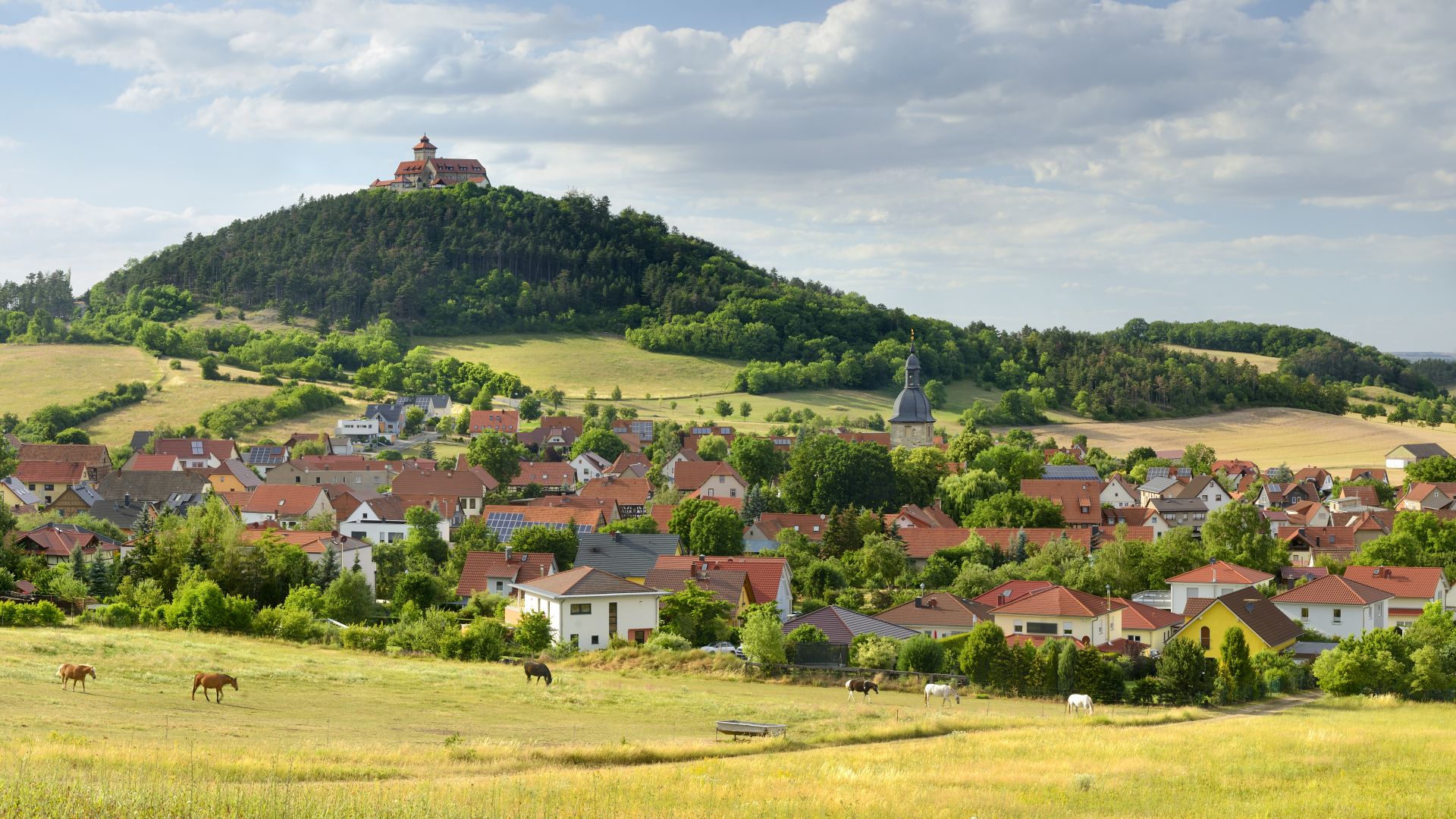 Amt Wachsenburg: View over a small town and the fields to the Veste Wachsenburg
©DZT (Francesco Carovillano)
Amt Wachsenburg: View over a small town and the fields to the Veste Wachsenburg
©DZT (Francesco Carovillano)
You can admire them from afar: the “Drei Gleichen” castles - Mühlburg, Wachsenburg and Burg Gleichen - tower on their hills high above the Thuringian Basin. At its feet lies Wechmar, the birthplace of the Bach family of musicians. You can learn more about the family and their music at the memorial in the Bach ancestral home, where an ancestor of Johann Sebastian Bach lived. And if you want to learn even more about the genius composer, his places of activity in Arnstadt and Ohrdruf are not far away.
Obercunnersdorf - home of the half-timbered houses
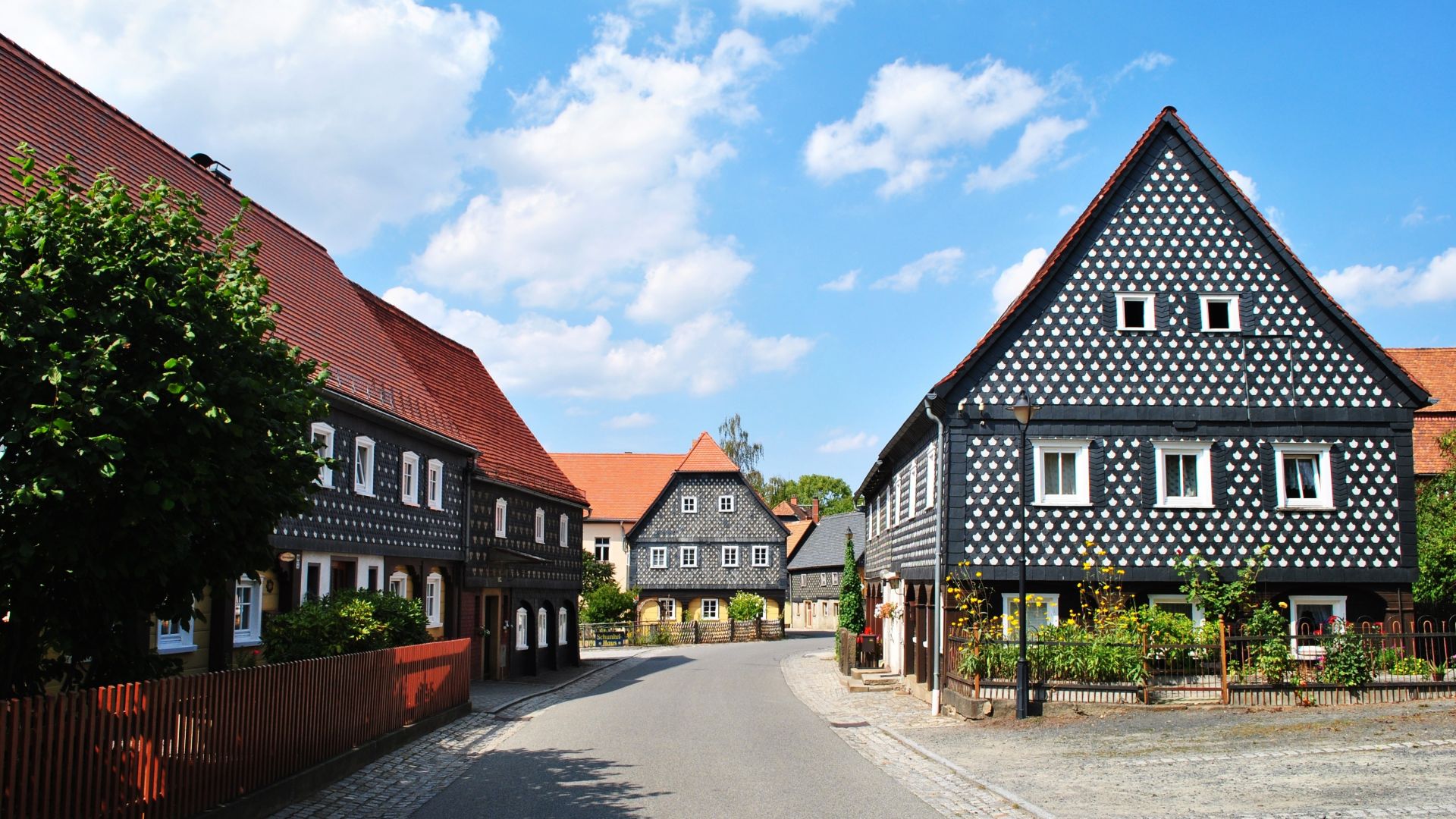 Kottmar: half-timbered houses in the district of Obercunnersdorf
©Adobe Stock (bnorbert3)
Kottmar: half-timbered houses in the district of Obercunnersdorf
©Adobe Stock (bnorbert3)
Country life in eastern Saxony traditionally took place in the so-called “Umgebindehäuser” - a combination of wooden plank and half-timbered houses with lovingly designed details such as stone door frames and slate decorations. As many as 250 of these fascinating buildings can be found in the village of Obercunnersdorf, whose history dates back to the 13th century. The best way to explore the architecture is on a bike ride or a walk through the village.
Germerode - wander through the poppy blossoms
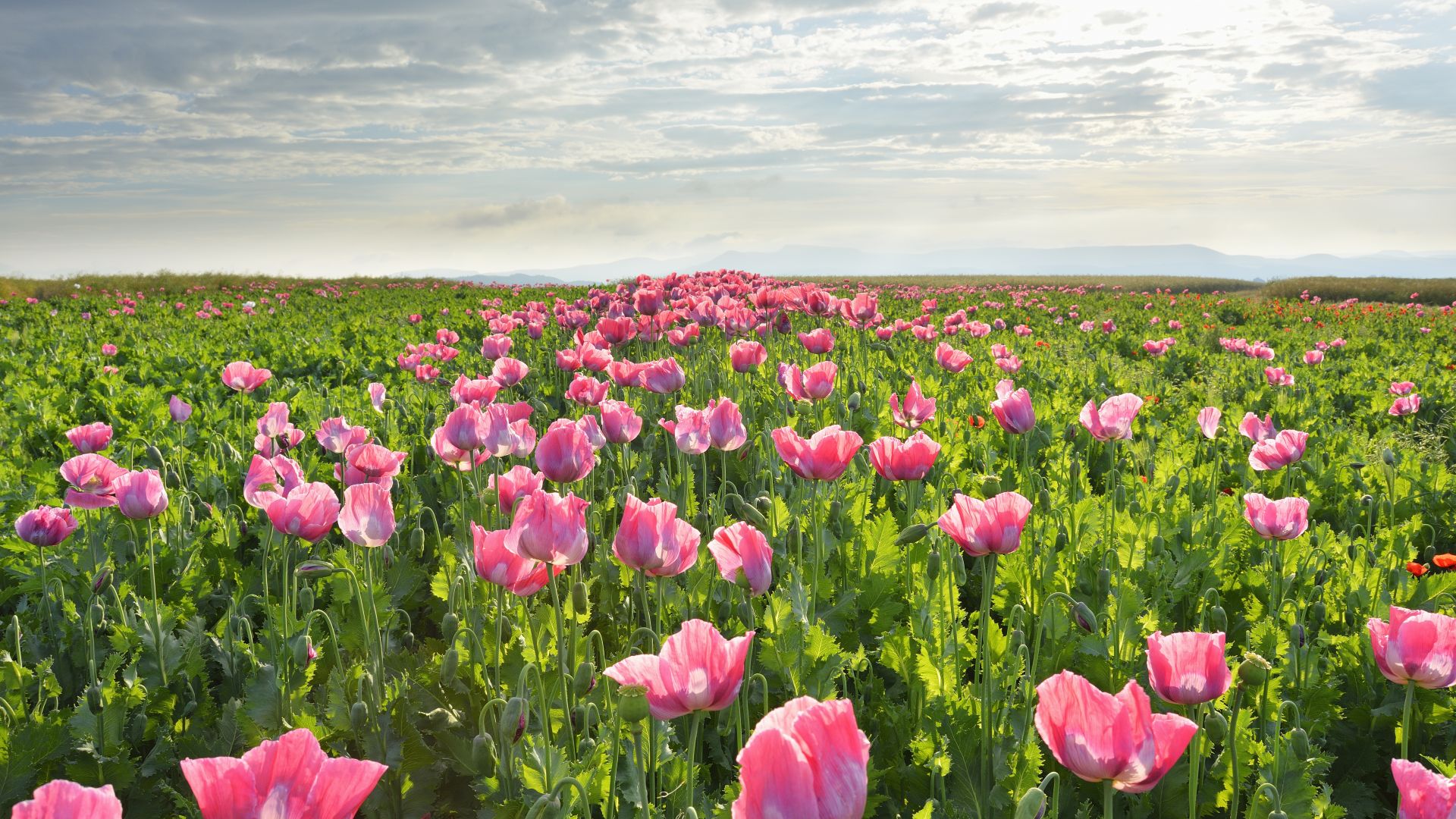 Meißner: Poppy fields in bloom on the Hohe Meißner in Germerode
©Getty Images (Raimund Linke)
Meißner: Poppy fields in bloom on the Hohe Meißner in Germerode
©Getty Images (Raimund Linke)
Rye, wheat, rapeseed and corn - every village lives off its produce. But poppy fields blooming in the heart of Hesse? Every year, from the end of June to mid-July, purple carpets of flowers stretch all the way to the foot of the Hohe Meißner in Germerode. Visitors can choose to experience the spectacle on a walking tour, or a wagon or carriage ride. By the way, the former Premonstratensian Monastery, as well as the Meissner Mountain Game Park in the Geo-Nature Park Frau Holle-Land are also well worth a visit.